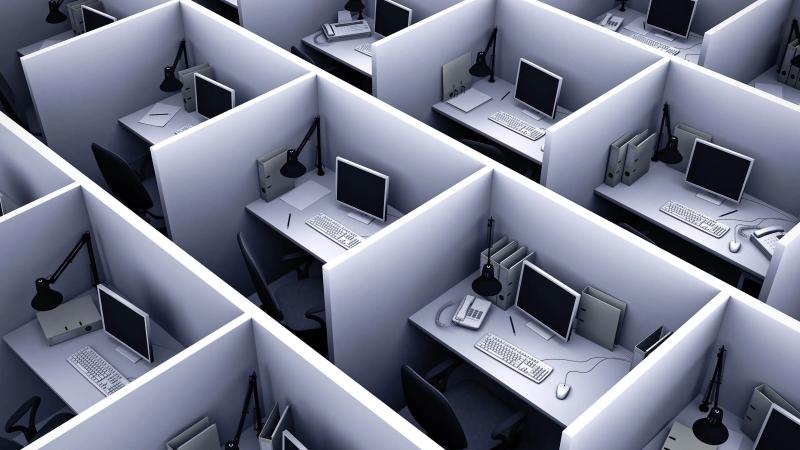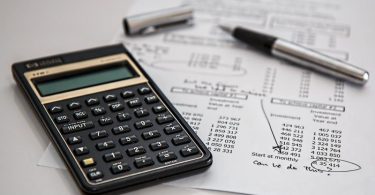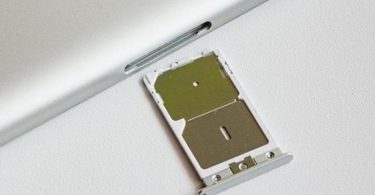A desk and a cubicle are essential components of a conventional office layout, but they serve different functions and provide varying degrees of privacy. A desk is a piece of furniture typically consisting of a flat or slanted work surface where people can complete their work. It is a location for placing computers, papers, and other essential instruments. Desks can be standalone or a part of a more extensive system, and they are available in various styles and sizes to meet the requirements of each individual.
In contrast, a cubicle is a semi-enclosed workstation separated from the rest of the office. It typically includes a workstation and cabinets, shelves, and walls. Cubicle walls provide privacy and noise reduction, allowing workers to concentrate on their duties more effectively. Cubicles organize open office spaces by providing employees with their designated space. A desk is essentially just a work surface, whereas a cubicle is a workspace that contains a desk and provides a semi-private area within an open office environment. Therefore, the primary difference is the degree of privacy and spatial arrangement each offers in an office setting.
What is a Desk?
A desk is an essential piece of furniture found in places like businesses, schools, and homes. It is meant to help people work or study more effectively. Its primary purpose is to give you a place to write, read, use a computer, draw, or do other things by hand.
Traditionally, desks have a flat, horizontal top held by four legs. However, modern desks can look very different. Some desks have drawers or other storage spaces that make them more useful by giving you a place to put office supplies, papers, and personal items. Desks come in many shapes and sizes to meet various needs. For example, a writing desk is usually simple and has few places to put things. Instead, it has a large surface area for papers. On the other hand, a computer desk usually has places for hardware components, keyboard boxes, and ways to keep cables organized.
In a business setting, executive desks are usually more oversized and fancier, which shows their standing. They typically have more room to work on and more options to store items. On the other hand, standing desks are becoming more popular because they are suitable for your health and allow you to switch between sitting and standing while you work. Ultimately, the desk, one of the most essential parts of a productive workspace, has changed to meet new needs, technology advances, and ergonomic concerns. Its main goal is still to give people a place to work or study.
What is Cubicle?
A cubicle is a semi-enclosed space with a wall that is part of a bigger office. It is meant to give employees some privacy and personal space while keeping the office open. It’s an essential part of modern office design, and its primary goal is to make the most of floor space while lowering noise. Usually, each cubicle has a desk, computer, chair, and sometimes shelves or filing compartments. The walls are generally made of light materials and are often padded to keep out noise. They are usually just above desk height, so people can easily talk to each other but still feel like they have their place.
Robert Propst came up with the idea of cubicles in the 1960s. He wanted to make a more dynamic and flexible place to work. But when it was implemented, it led to grid-like office plans, which were criticized for being impersonal and bland. Despite this, cubicles have a lot of benefits. They balance the need for privacy and the need to work together by letting workers personalize their space to some extent and making it easy to communicate and work together. As work settings change, so does the design of the cubicle. Newer cubicles pay more attention to ergonomics, aesthetics, and the health and happiness of their occupants.
Difference Between Desk and Cubicle
A desk is a piece of furniture with a flat top that can be used for various office-related activities. It doesn’t block out sounds or provide privacy so that you may put it anywhere. Conversely, a cubicle is a semi-enclosed office workspace that generally only contains a desk, a chair, and some walls. The walls provide some seclusion and muffle ambient noise. The main difference between a desk and a cubicle is how each offers occupant privacy in an otherwise open office. We have compared the desk to the cubicle, outlining the key differences between the two below.
Functionality
While a desk primarily serves as a place to set down one’s work, a cubicle provides a more private working environment with a desk and additional storage space.
Privacy
In contrast to a desk’s open layout, a cubicle’s partitions create a sense of seclusion and personal space, even in a busy office.
Noise Reduction
Desks don’t offer the same isolation level from outside noise as cubicles.
Personalization
A cubicle provides more room and opportunities for customization than an individual desk.
Space Occupation
A cubicle’s walls and other features occupy more room than a desk’s working area.
Work Environment
While cubicles are typically only found in offices, desks may be utilized anywhere from the home to the classroom to the workplace.
Storage
Cubicles typically include shelves, cupboards, and filing systems, although desks might or might not.
Communication
Compared to a cubicle’s semi-open design and a desk in an open area, the latter provides individual concentration and controlled interaction.






